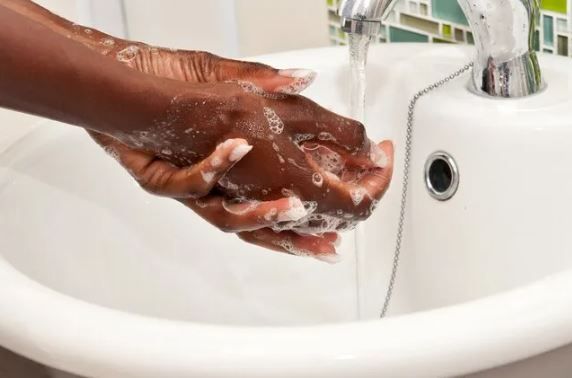You probably know someone who has recently come down with the dreaded, but common, stomach bug, norovirus, which has these telltale symptoms: one to three days of vomiting and diarrhea. That’s because cases have been steadily increasing across the nation since fall 2022. We’ve also seen an increase of cases in our community – especially senior living facilities.
According to the U.S. Centers for Disease Control and Prevention (CDC), norovirus contributes to 56,000 to 71,000 hospitalizations and 570 to 800 deaths each year in the U.S. Kimberly Shriner, MD, medical director of infection prevention and control, Huntington Health, explains why people end up in the hospital: “The symptoms can make people not only feel genuinely bad – with nausea and diarrhea – but they can also lead to dehydration, making compromised people quite ill, causing hospitalization.”
The CDC says about 20 million people get sick from norovirus each year. The large number is due to the virus’s resilience and rate of spread: It can survive on surfaces for multiple weeks, infected food workers can easily contaminate food they prepare or serve, and it spreads rapidly within crowds and confined spaces – like senior living facilities. Additional reasons for the current uptick have been linked to contaminated oysters, and some officials believe re-entering public places after a long COVID-19 lockdown has made individuals more vulnerable to catching viruses.
The good news is, you can still avoid getting it or spreading it. Dr. Shriner explains, “The best tool to prevent this virus is frequent handwashing. Interestingly, we are learning that hand sanitizers are not as beneficial in preventing the spread of this virus. So it’s important to take every precaution to wash hands and keep surfaces and linens clean if you are living in a space where your friends or family members have the virus.”
Here are some additional facts about norovirus:
- How it’s spread: Norovirus is found in vomit and feces; when an infected person vomits, norovirus can land on nearby surfaces and objects. Unwashed hands can also contaminate food. You can get norovirus by caring for an infected person; changing diapers; eating or drinking food touched by an infected person; eating undercooked shellfish from contaminated waters; touching contaminated surfaces or objects then touching your mouth or food before washing your hands; using a contaminated toilet; and cleaning up infected vomit or diarrhea without protective gear (e.g., gloves, mask and gown). You can also get norovirus more than once because of its many strains.
- How long you are contagious: Infected people are contagious as soon as they feel ill and a few days after they feel better, but one can be contagious for two weeks or longer after feeling better.
- Symptoms: Norovirus causes gastroenteritis – short-term inflammation of the digestive system – which can include stomach cramps, nausea, diarrhea, vomiting, a low-grade fever, headache and body aches. Vomiting and diarrhea can occur many times a day, which can cause dehydration, especially in young children, seniors and compromised people. Signs of dehydration: less-than-normal urination, dry mouth and throat, and dizziness when standing up. Children with dehydration may cry with few to no tears and be unusually sleepy or irritable.
- Treatment: Drinking lots of fluids is recommended to replenish fluids lost from vomiting/diarrhea and prevent dehydration. Contact your doctor if you suspect dehydration. Norovirus is not treated with antibiotics because it is not caused by bacteria.
- How you can prevent it: Wash hands often with soap and water for at least 20 seconds. Carefully wash fruits and vegetables and fully cook oysters and other shellfish (140 F will kill norovirus). If you’re sick, stay home and avoid using public toilets (if you use a public toilet, inform staff so they can properly disinfect it). Do not care for others or prepare/serve their food for at least 2 days after you feel better. Disinfect areas contaminated by vomit/diarrhea with the following solution: 1 cup of bleach per 1 gallon of water.
To learn more about norovirus visit: www.cdc.gov/norovirus/index.html
 English
English Espanol
Espanol 简体中文
简体中文 Tagalog
Tagalog հայերեն
հայերեն 한국인
한국인 Tiếng Việt
Tiếng Việt فارسی
فارسی русский
русский 日本
日本 عربي
عربي